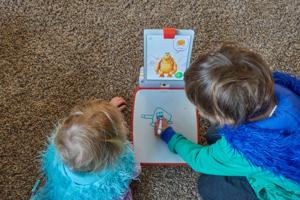Cash for kids: Starting in July, most parents to receive monthly cash payments per child

(The Center Square) – In what some have described as a precursor to a Universal Basic Income plan, where individuals receive regularly scheduled direct payments from the federal government, under the American Rescue Plan, the Child Tax Credit has been transformed into cash advance payments.
Originally designed as a way to offset taxes owed by parents who could claim their children as deductibles, the Biden administration is giving 50% of what would have been a tax deduction in the form of monthly cash payments based on age and number of children within income thresholds.
Starting July 15, qualifying families will receive monthly $250 or $300 payments per child through the end of 2021.
The money was allocated through the American Rescue Plan passed along party lines. It increases the Child Tax Credit from $2,000 to $3,000 per child for children over age six, and from $2,000 to $3,600 for children under age six. It also raised the age limit for eligible children from age 16 to age 17.
The tax credit was enacted in 1997 and has been expanded since 2001 with bipartisan support. It was initially designed not as a cash payment but as a way for a credit to be subtracted from what families would owe in federal income taxes. Prior to this year, if a couple with two qualifying children owed $4,600 in taxes without the credit, they would owe $600 in taxes with it, because the credit reduced their taxes by $2,000 per child.
Now, a family of four with children all under age six will receive $7,200 in cash payments. The remainder would be kept as a tax credit to offset what the family may or may not owe in taxes next year.
For every child between the ages of 6 and 17, families will get $250 per child every month through December. For every child under 6 years old, families will get $300 each month.
Payments and credits are based on earnings of up to $150,000 per couple or $112,500 for a single parent family.
“The Child Tax Credit means help directly in the bank accounts of the families who need it,” President Joe Biden said. “Nearly all working families will automatically get monthly payments starting July 15th – no action needed. Head to http://childtaxcredit.gov for more information.”
It’s the largest cash payment for children in U.S. history. Families will receive automatic monthly payments deposited into their bank accounts on the 15th of every month through the end of 2021. Electronic payments will be made if they already filed 2019 and 2020 tax returns or signed up to receive stimulus money. Those who don’t use direct deposit will receive their payment by mail around the same time.
These amounts are based on estimates, CNBC notes, from available data like income, marital status, and number and age of qualifying children. “Outdated data may trigger an overpayment of the tax credit – and the need to pay back any excess funds.”
Some groups are advocating for the permanent expansion of the program, arguing it could lift more than 4 million children out of poverty. Others argue it discriminates against individuals who don’t have children and doesn’t lift low wage earners out of poverty.
Under the Tax Cuts and Jobs Act of 2017, families could receive a refund equal to 15% of their earnings above $2,500, of up to $1,400 per child. The Center on Budget and Policy Priorities claims it “lifted approximately 4.3 million people out of poverty in 2018, including about 2.3 million children, and lessened poverty for another 12 million people, including 5.8 million children.”
But Eric Boehm at Reason, argues, “the federal government should not be in the business of incentivizing people to have children, either with benefits doled out through the tax code or the welfare system. Nor should it pay people not to work, either by borrowing or by redistributing tax revenue from those who do.” Doing so, he argues, is a form of “social engineering that rewards people for choosing to reproduce – even if they cannot afford to raise children – instead of working toward other productive goals that don’t involve offspring.”
The American Rescue Plan is expected to put the U.S. into another $4 trillion worth of debt.
It’s estimated to cost over $1.9 trillion through 2031, but if certain policies are extended, the debt could be twice as high, the Committee for a Responsible Budget calculates. “If the tax credits were made permanent and these relief measures were extended for the duration of the crisis, it would raise the total cost of the bill to $3.8 trillion through 2031, or $4.1 trillion with interest.”
The bill includes more than $100 billion to fund a one-year expansion of the Child Tax Credit. Making the expanded version of the CTC permanent would cost an additional $1.5 trillion, the committee estimates.
Disclaimer: This content is distributed by The Center Square
